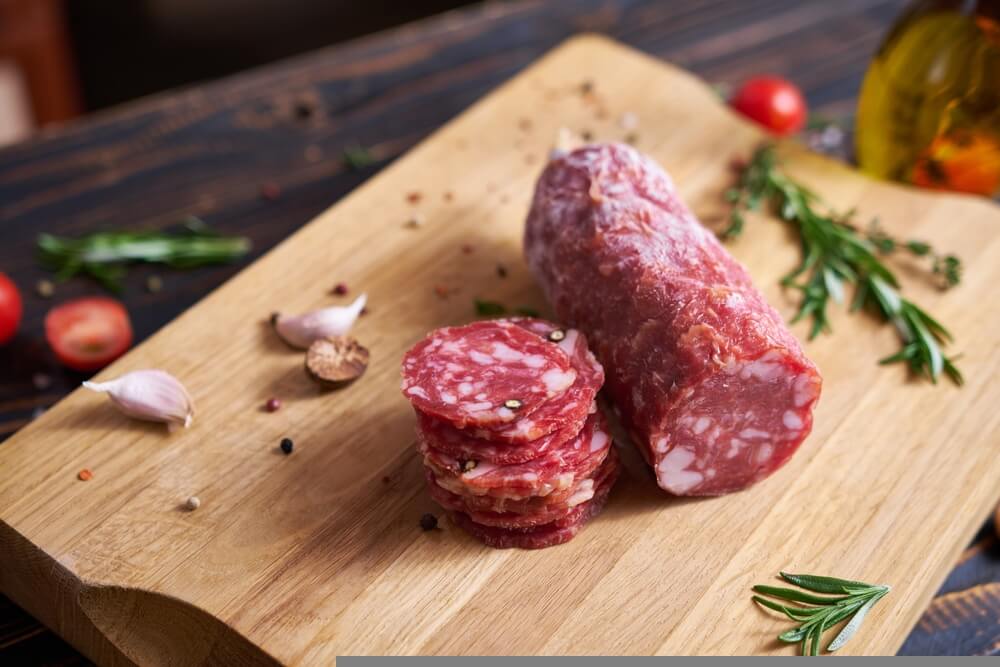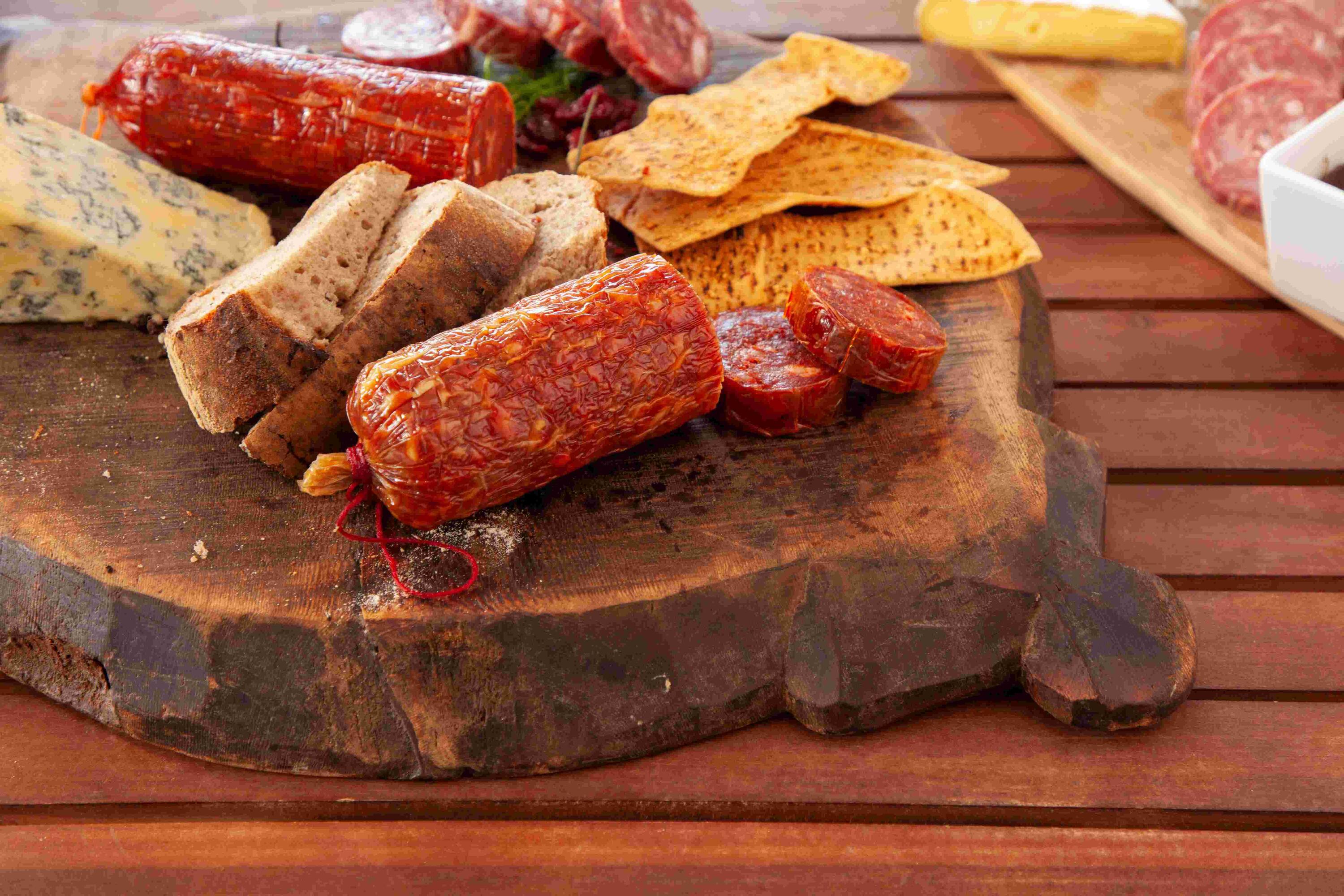Inside the Art of Traditional Salami Making
Traditional salami isn’t just food—it’s a craft passed down through centuries. The process combines expert butchery, careful seasoning, and slow curing to produce bold flavours and a distinctive texture. Let’s explore the steps that turn fresh meat into one of the world’s most beloved cured delicacies.
STEP 1: PREPARING THE MEAT
Typically when discussing types of charcuterie, we focus first on the cut of meat specific to the product. However, Salami isn’t always made of one specific cut of meat. It is almost always made of ground pork, a mixture of lean muscle and high-quality bright back fat, the combination of which imparts a unique flavor profile to the end product.
Once the meat is selected, it’s chilled and then put through a grinder until it reaches the desired grain. At the end of this step, we’re left with a mix of meat ready for fragrant spices.
STEP 2: SALT, SEASONING, AND PACKING
First, salt is added to the mixture. This is a critical step as salt helps to inhibit the growth of bacteria. Without the proper salt ratio, the Salami will become rancid and inedible. Afterward, we start adding a variety of seasonings.
The types of seasonings that get used are extremely wide and limited only by the imagination of the Master Salumiere at hand. There are dozens of different Salami varieties — all created by combining different seasonings in various proportions.
The most common ingredients include garlic, black pepper, fennel, and warm spices. However, chances are that your favorite spices are used in one of the many varieties of Salami.
Sometimes liquid ingredients like wine are added. These can introduce additional sugar content to the mixture which affects the fermentation process. They also make for some tasty pairings.
STEP 3: FERMENTATION
The first step is fermentation – a process that inhibits the growth of bad bacteria within the meat. This step is critical in salami making, without a proper ferment, the meat can spoil and be rendered inedible. Cure Masters are able to control a slow, cold fermentation over several days by making slight adjustments to temperature and humidity in order to slowly drop the pH of the salami without leaving a sour aftertaste.
Once fermentation is complete, each salami enters a drying phase. This step in the process draws out water molecules from the center of the log to the outside air through a process called osmosis. Again, this is a very delicate process best managed by expert Cure Masters – Master Salumieri – to assure the molecular chain is not broken. A significant amount of water must be removed from the salami before it is considered safe for consumption.
After that standard water activity is met, elongated drying time is used to assist in flavor and texture development of the product. In the United States, salami eaters prefer a drier, harder salame which may require additional drying time or slight changes to temperature, humidity, and airflow.
STEP 4: ENJOY!
No Salami is complete until it’s been properly served and enjoyed by friends and family. The easiest way is to cut off thick slices and enjoy them on their own or as part of a charcuterie board.
However, we’d also like to suggest a few different ideas to use this delicious Salami now that you have a greater understanding and appreciation for it.





